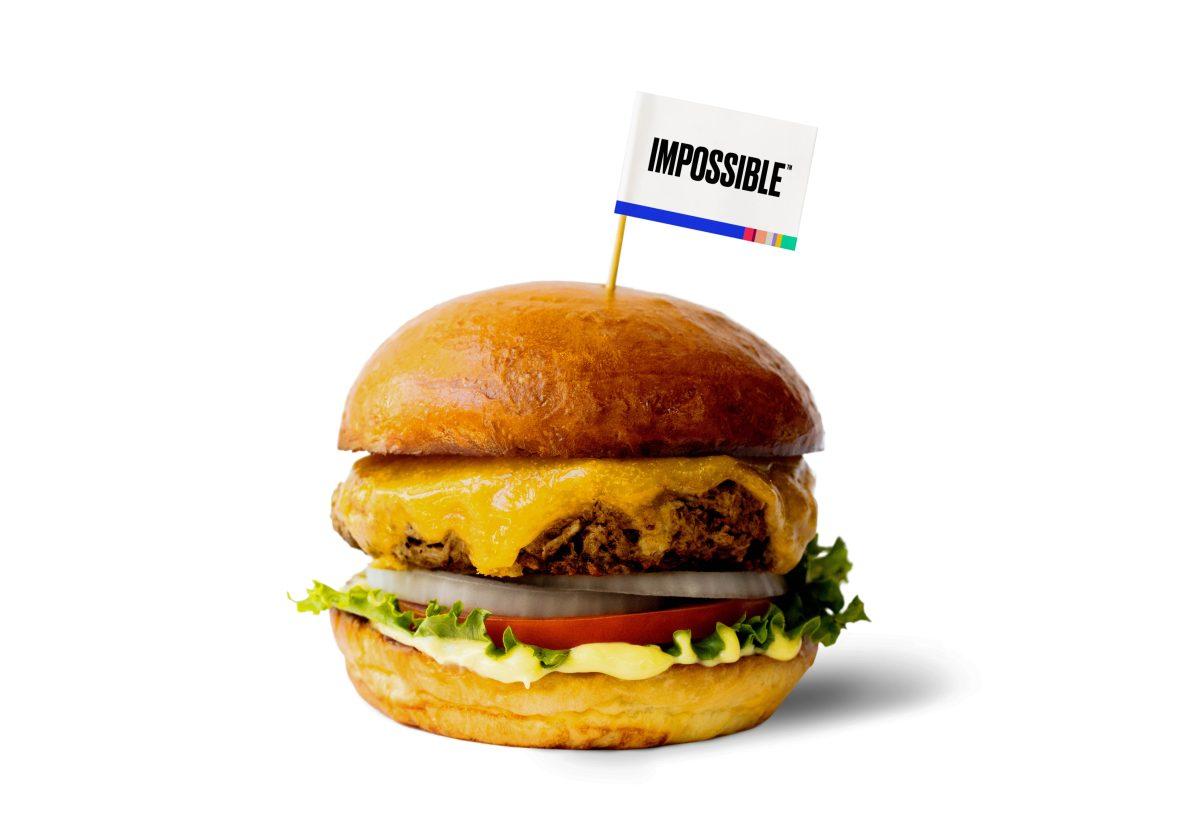Scientists and business developers made the impossible possible with a new sustainable burger available in only 15 places in Texas, including College Station’s Hopdoddy Burger Bar.
Founded in 2011 by Stanford professor Dr. Pat O. Brown, Impossible Foods is a company focused on developing plant-based meat and dairy products without the use of animals in an effort to make global food production more sustainable. After five years of research, Impossible Foods presented their first product a year ago — the Impossible Burger.
Unlike ordinary veggie burgers, the Impossible Burger looks just like a beef patty in raw form and was crafted to taste exactly like a traditional burger, according to Impossible Foods Sustainable and Agricultural Manager Rebekah Moses.
“When creating the burger we wanted to make sure it was equivalent to a beef burger in every possible way,” Moses said. “It has to be craveable, it has to be something super tasty.”
Using 95 percent less land and 74 percent less water, the Impossible Burger is entirely made of natural ingredients, such as coconut oil, potato protein and heme — the key ingredient to creating a real burger-eating experience, according to Moses.
“Heme is short for leghemoglobin which is a protein that is really similar to myoglobin and the red blood that is found in beef,” Moses said. “Our scientists discovered pretty early on that the thing that catalyzes these flavor changes and cooking characteristics of a real burger are myoglobin and red blood. We needed to find that same thing from the plant kingdom and we found it in leghemoglobin.”
While this burger is made from plants and contains no cholesterol, Moses said it still contains the same amount of fat and calories as a regular beef burger. However, Moses said it is more efficient to produce which could potentially alter the way food is produced on a global scale.
“As we get closer to 10 billion people on the planet, people are eating more and more meat and dairy products, which will put a lot of stress on our food system,” Moses said. “Creating foods like this is a way we can be a part of this tool kit for feeding the future in a more sustainable way.”
Texas A&M sociology professor Alexander Hernandez discovered the Impossible Burger while conducting research on sustainable food options for the future. He said he believes the Impossible Burger is just the start of a wide range of foods that can be developed using less resources.
“From what we understand, it would be less of an environmental impact than beef itself,” Hernandez said. “Is it good or bad? Well, it’s less bad. But then again this is a completely brand new product. There’s still a lot that we don’t know. So it has potential, which is why they are investing so much money into it.”
Hernandez said the ultimate goal is to combat climate and environmental change, which can be done by simply changing what you eat.
“Even if you don’t go vegetarian or vegan, there are still many other [environmentally friendly foods],” Hernandez said. “People tend to think you either eat meat, or you don’t eat meat and there’s nothing in between, and now there’s so much variety in that in-between spot. The Impossible Burger is just one of the things we have available to us. Soon, it’s going to be one of many.”
With the Impossible Burger’s availability in College Station, locals are able to get a head start on making more sustainable food choices. According to Regional Culinary Director of Hopdoddy Joe Gerardi, Impossible Foods did a great job of mimicking the texture and taste of a real burger in the all-natural Impossible Burger.
“We had a lady come in our location in Houston to try to distinguish between the Impossible Burger and a real burger, and she couldn’t tell the difference,” Joe said. “They did a pretty good job with that. We even had a guest send the burger back. They were a vegetarian and they wanted to try it, but said it resembles a beef patty too much.”
An alternative burger
November 29, 2017
Photo by Provided
The Impossible Burger was created to make global food production more sustainable.
Donate to The Battalion
Your donation will support the student journalists of Texas A&M University - College Station. Your contribution will allow us to purchase equipment and cover our annual website hosting costs.




















